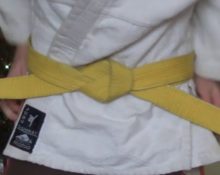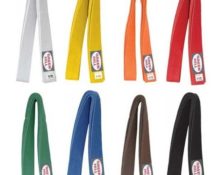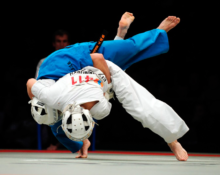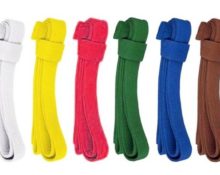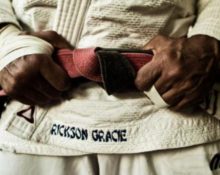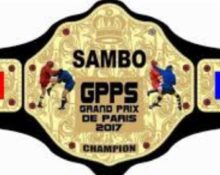In classical aikido there is no color gradation of combat clothing at all. The tint division came from France. The introduction of a European element into native Japanese art is explained by the desire to motivate students. Children and teenagers find it easier to strive for success and overcome themselves when they see tangible evidence of their progress.
Features of the belt system in Aikido
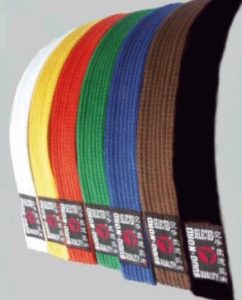 Color gradation allows you to roughly assess the skill level of a particular athlete. Approximately - because not all schools and clubs use the generally accepted belt system. Differences in interpretation and approaches are also caused by the fact that Aikido, as a martial art, is not homogeneous and has branches.
Color gradation allows you to roughly assess the skill level of a particular athlete. Approximately - because not all schools and clubs use the generally accepted belt system. Differences in interpretation and approaches are also caused by the fact that Aikido, as a martial art, is not homogeneous and has branches.
It should also be taken into account that for many competitions it is customary to wear paraphernalia of 2, maximum 3 shades. The following hierarchy is established at such events:
- white is worn by everyone at student level;
- brown ones are the prerogative of older students;
- Only masters deserve black.
Important! The larger and more significant the sporting event, the higher the chances that participants will come wearing exclusively black or white belts.
With the black attribute, things are also not so simple. It is awarded to everyone who managed to prove themselves and become the best at a tournament or competition of a certain level. That is it doesn't matter whether a person is 1st dan or 10th dan. He'll still wear a black belt. At the same time, the difference between the skills and abilities of those who have 1st dan and those who have 10th is colossal. That is why the color of an element of sportswear is only an approximate indicator of the level of skill. Shade gradation is not able to reflect the real capabilities of a particular aikidoka.
Important! Belts are not the only way to assess the power of an opponent or to find a person who can play the role of a mentor. During training, at the beginning and end, club members line up in front of the mentor to bow. The row is formed not by height, but by skill level.
Belts in wrestling in order and color
As mentioned above, Aikido is a multifaceted art that has many shades. Aikikai and Yoshinkan are 2 such “shades”. They are popular and have the most followers. Their followers wear uniquely colored equipment, and at each level they acquire a different amount of techniques and knowledge.
Important! In St. Petersburg, regardless of direction, the Yoshinkan gradation is taken as a guide.
To Aikikai
Steps and symbolism:
 6 kyu. Worn by beginners and athletes who have passed the 6th kyu test. White color.
6 kyu. Worn by beginners and athletes who have passed the 6th kyu test. White color.- 5 kyu. Awarded after passing certification. Yellow color.
- 4 kyu. The red tint symbolizes significant personal progress in comparison with the previous facet.
- 3 kyu. Green belt. The next step in the system of improving skills.Referred to as “unlocking potential”. The attribute is given to those who have been practicing for about 2 years and are imbued with the philosophy of Aikido.
- 2 kyu. Athletes who have reached a relatively high level of mastery of techniques, but have not yet adequately mastered the spiritual component of Aikido, have the right to wear a blue belt.
- 1 kyu. The brown color on an item of equipment indicates that the aikidoka is preparing to move to the master level.
Black is the color of the sports elite, a shade of wisdom. Master level: 1 dan and higher.
Important! In some schools, the red tint completely or partially replaces the brown.
To Yoshinkan
Steps and symbolism:
 10, 9, 8 kyu. Students at these levels wear a white belt. To move from 10 to 9 and from 9 to 8 levels you need to pass a certification test.
10, 9, 8 kyu. Students at these levels wear a white belt. To move from 10 to 9 and from 9 to 8 levels you need to pass a certification test.- 7 kyu Corresponds to level 6 kyu in traditional aikido. Belt color: yellow.
- 6 kyu. Fighters of this level have an orange identifying attribute in their equipment.
- 5 kyu. Upon transition to this level, they receive a green belt.
- 4 kyu. Fighters preparing to become senior students wear blue belts.
- 3-1 kyu. Senior students are given brown insignia.
Black belt in Yoshinkan, as in classical Aikido, is the prerogative of masters.
How does the order in children differ from the gradation of belts in adults?
Children under 15 years of age can apply to wear belts of a limited color spectrum. They have the opportunity to receive:
- white;
- yellow;
- orange (in some schools – red);
- green piece of equipment.
Adults do not face such restrictions.
What do the stripes on the belt do?
 At competitions and demonstrations, you can see sewn badges - stripes - on the equipment of students and aikido masters.Upon closer inspection, it turns out that they depict hieroglyphs or symbols accepted in their schools. For example, stripes or even emblems of the circles themselves.
At competitions and demonstrations, you can see sewn badges - stripes - on the equipment of students and aikido masters.Upon closer inspection, it turns out that they depict hieroglyphs or symbols accepted in their schools. For example, stripes or even emblems of the circles themselves.
In the branches of Aikido, where the white belt is worn not only by beginners, but also by certified students, stripes and their number are a demonstration of the professional growth of the athlete. A guideline that allows you to determine how many tests have already been completed. Typically strips are used for these purposes. 1 = 1 passing the exam. 2 = 2 successful certifications.
Graphic symbols like emblems on colored belts are a personal initiative of athletes or their mentors. Such stripes do not have status significance, but badges sewn onto black belts have it. Upon receiving the title of “master”, a belt is issued on which the owner’s name is indicated.. Moreover, the inscription is not in Cyrillic, but in hieroglyphs.
Important! It is believed that once the owner's initials are applied to it, the belt becomes close to its owner. It helps to improve the athlete on a physical and spiritual level, brings good luck and allows you to achieve harmony.
There are also branches of aikido in which stripes on training clothing are an indicator of readiness for a new certification. The test is scheduled after the aikidoka receives the 4th badge.


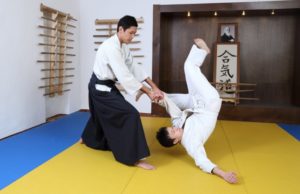 6 kyu. Worn by beginners and athletes who have passed the 6th kyu test. White color.
6 kyu. Worn by beginners and athletes who have passed the 6th kyu test. White color.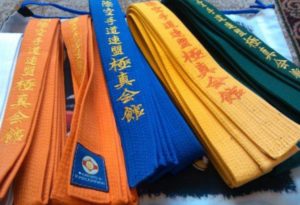 10, 9, 8 kyu. Students at these levels wear a white belt. To move from 10 to 9 and from 9 to 8 levels you need to pass a certification test.
10, 9, 8 kyu. Students at these levels wear a white belt. To move from 10 to 9 and from 9 to 8 levels you need to pass a certification test. 0
0